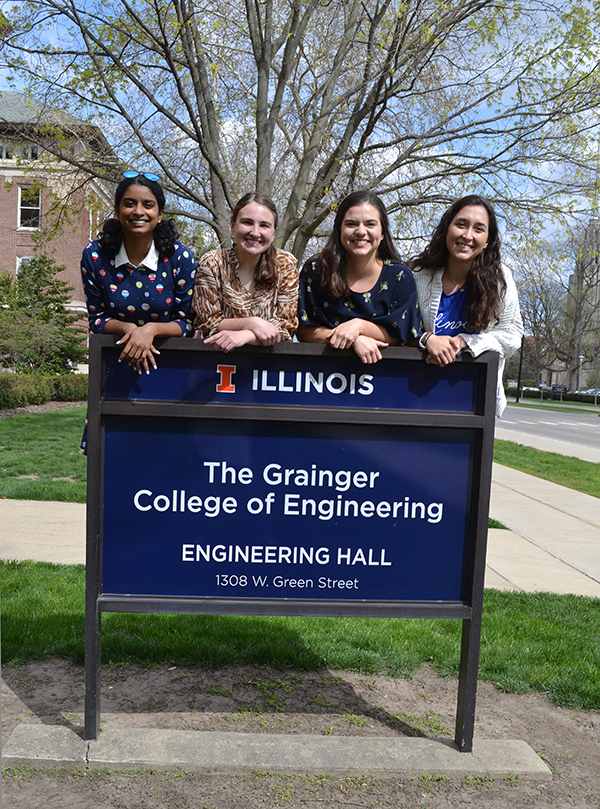Science Policy Group Hosts Brown Bag Luncheon About Diversity Initiatives in STEM

Ellen Wang Althaus, Director of Graduate Diversity in the Chemistry Department, chats with a brown bag luncheon participant following the meeting.
May 3, 2017
On April 19th, a number of University folk interested in increasing diversity in STEM attended a brown bag luncheon, "Diversity Initiatives in STEM." The featured speakers at the event were Ellen Wang Althaus, Director of Graduate Diversity in the Chemistry Department, and Jennifer Greene, a Professor in Educational Psychology. Sponsoring the event was a new RSO (Registered Student Organization), the Science Policy Group, which began in fall of 2016.

A member of the Science Policy Group, David Stevens, shares about some upcoming activities of its affiliated Reading Group on Diversity.
Before beginning the dialog about diversity, Cecilia Gentle, a Chemistry graduate student in charge of the event shared about the Group’s three committees and their goals:
- Inform (informs people about what science policy is)
- Professional Development (equips students with skills to affect change)
- Advocacy (advocates for change in science policies)
She also shared about their recent January 21st panel, “What does the Trump Administration Mean for Science,” and their April 10th “Call-A- Representative Day." Upcoming events include a visit by Senator Scott Bennett in June and a Reading Workshop in the fall on Diversity Policy in STEM.
According to Gentle, the goals of the event were to: “Introduce policies that help promote diversity in STEM; understand why these policies exist and how they came about; and think critically about their effectiveness to actually recruit underrepresented groups into STEM fields.”
The two speakers began by sharing a bit about themselves and how they got involved in promoting diversity in STEM.

Ellen Wang Althaus shares about her experiences as Director of Graduate Diversity in the Chemistry Deprtment.
Althaus shared that she is “passionate about supporting women and underrepresented groups and those who are marginalized to really reach their potential. I’m excited about that, and that’s why I keep doing what I’m doing.” She also acknowledged, ‘I don’t have a degree in social policy and educational policy; I think a lot of it I’ve kind of learned along the way through experience.”
Greene reported growing up in a liberal culture. “There were some revolutionary times in the 1960s,” she said. “One week was a yellow arm band; the next week was a red one; and the next one a green one; it was all very exciting. But the big one was protesting the Vietnam War.”

Jennifer Greene shares about her experiences with NSF's Broadening Participation initiatives.
Greene said her involvement during this time period had a significant impact on her belief system. “You develop some sensibilities about what’s right and what’s wrong with the direction of the country when you’re in the midst of something like that,” she admits. “I grew up with a liberal, progressive sensibility about what’s right and what’s wrong,”
Greene’s beliefs also helped to shape her career choice: “This interest in the ways in which our educational system serves everybody well is part of why I’m in the field of educational psychology” she admits. “I’m a strong believer in the power of education to move mountains. But it doesn’t move mountains; it doesn’t even move grains of sand for a lot of people, so that commitment’s been with me for a long time.”
Althaus shared about why diversity policy exists and why it matters. She indicates that the push for diversity “really has to do with global competitiveness—our nation’s ability to compete in a global economy, to drive innovation through science and technology.” She adds the caveat that “In the STEM fields, there’s been a growing dependence on international students to do the research at our institutions.”


As part of her presentation, Althaus presented data from the National Science Foundation (NSF) regarding the percentage of people from the various racial/ethnic groups in the US population vs. the percentages of the racial/ethnic groups in science and engineering careers.
“NSF's goal is to mirror the population,” Althaus explained. She reported attending an NSF-sponsored workshop where, “The conversation evolved from the moral, social good that it should represent the population to the educational benefits to the business case.” However, there are also significant financial ramifications: “The demographic is changing,” she claimed, “and even from an economic standpoint, the market demand is going to change too. How are we going to make new products that meet the demand?”
But one of primary reasons to increase diversity in STEM is for diversity of thought. “Not just because we need to have diversity for the sake of diversity…” Althaus explained. “Diversity is not just the color of your skin; it’s really your personal experiences; how they shape your way of thinking; how they shape your way of problem solving.”
So to promote diversity in STEM, the U.S. needs to increase the number of underrepresented students who enter STEM careers. Greene explained that the NSF classifies the following groups as underrepresented in STEM: women (in most sciences, except for biology), African Americans, Latinos/as, Native Americans, Alaskan Natives, Pacific Islanders, and people with disabilities.
To increase diversity in STEM, one strategy discussed was to plug the leaks in the STEM pipeline. While it is crucial to do so from the undergraduate to the graduate school level, Althaus noted that, “Not enough kids are getting into college; not enough kids are graduating high school; leaks are happening before this.”

A graphic representation of the US's leaky STEM pipeline. (Image courtesy of the NCES Digest of Educaiton Statistics; Science & Engineering Indicators, 2008.)
During the meeting, Greene alluded to a 2008 NCES Digest of Education Statistic graphic depicting 4 million US ninth graders in 2001 making their way through a leaky pipeline until only a few drops are left to enter the “STEM career” container. However, there was agreement that leaks begin even earlier than that.
But according to Greene, the NSF is seeking to stop them; for instance, all grants dealing with K–12 and higher education, both educational grants, as well as research grants, require a Broadening-Participation component. NSF also has funding that particularly encourages the involvement of HBCUs (Historically Black Colleges and Universities).
“You won’t get the money if you don’t have a serious effort to extend whatever innovation or curriculum you’re offering to people from the groups I just listed; and not only extend, but actively recruit,” said Greene. “NSF is serious about this, although there’s no real consequences when you don’t do it. That’s a problem.”
This lack of consequences, or lack of accountability, is another issue that cropped up repeatedly during the meeting. In response to a question regarding how we can foster accountability, Marlon Mitchell, an I-STEM evaluator, gave an example about creating a space where minorities feel welcomed. “The University of Illinois is a primarily white institution, right? So if I’m coming from a small HBCU, and I come into this space, and I’m being recruited for this campus, and I’m going into these labs, this is all foreign to me. But one of the things we talked about is how comfortable, not just dealing with the content knowledge I’m able to pick up, but how comfortable socially are you making me feel?”

Marlon Mitchell (second from the right) and Jennifer Greene (right), as she shares during the brown bag.
He then addressed the crux of the issue—how well underrepresented students in the STEM fields are being supported, whether it’s by an advisor, a mentor, or programs. Are they taking into consideration the cultural differences? “Those are things that we look at with a critical lens in evaluation to say, ‘So if I am able to keep up with whatever the research is, how am I being supported outside of that?’ So those are things that NSF doesn’t look at.”
For example, Greene, who has worked as an evaluator with higher education educational initiatives with broadening participation components, said that “neither the PIs nor NSF consistently hold them to account for that. Some do, but not always.”
But Greene reported that it is possible for these types of support to happen, and cites NSF’s long-standing (40–50 year-old) LSAMP (Louis Stokes Alliance for Minority Participation in science) program for undergraduates, which provides peer support, counseling, mentoring, and opportunities to make alliances. “So it’s possible for these things to happen,” said Greene, “and at the undergraduate level, I think that’s a very successful project.”

Brenda Andrade (second from the left) and other graduate students on hand to particpate in the dialogue on diversity in STEM.
Brenda Andrade, a Hispanic Ph.D. student in Chemistry, reported participating in an undergraduate program similar to LSAMP which provided professional development, mentoring, and prepared students to be competitive to apply for graduate school.
“So I come from that model, and I was lucky, very lucky, to have gotten into that program. So I don’t see why a school like this that has the research here couldn’t develop something like that for the undergraduate level, which is probably where you’re losing a lot of students in the minorities.”
So one solution the group came up with was for the University to form some sort of alliance to promote diversity in STEM that is designed to help undergraduate students get into graduate school by providing resources that target underrepresented students and mentor the students through that process.

A participant shares about her experiences with diversity during the meeting.
Greene shared about how much of an impact programs such as LSAMP, which she called “really powerfully supportive and motivating,” can be, especially in providing role models. She shared an anecdote about a recent evaluation of an LSAMP program she did at the University of Minnesota.
“The students talk about going to the Society for Black Engineers,” she shared, “and here they are in the middle of a room full of professional people who all look like them. That’s one of the comments that they made about how powerful that can be. And you can imagine. Same with Latinos; same with Native Americans.”
In addition to LSAMP, participants discussed some of NSF’s other Broadening-Participation programs, such as AGEP (Alliances for Graduate Education and the Professoriate), and ADVANCE (Increasing the Participation and Advancement of Women in Academic Science and Engineering Careers).
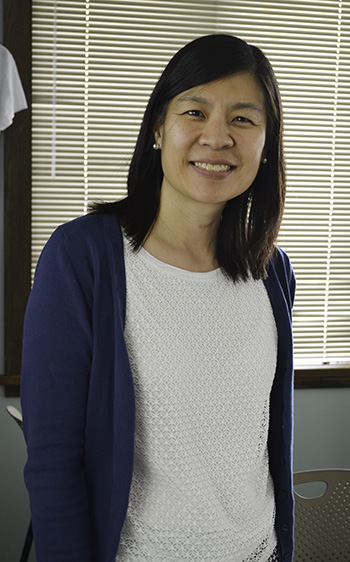
Ellen Wang Althaus.
In addition to NSF programs, the group also discussed other federal funders, such as NIH, and USDA, etc., and grants/programs they have that are promoting diversity.
There was also discussion about support for the LGBTQ community, along with disabled veterans and others who are underrepresented. For example, one participant, who maintains the graduate fellowships database for the grad college, indicates that funders are broadening their definitions regarding diversity and the underserved to include more than race or ethnic identity, but socio-economic status, first generation, gender orientation, or students struggling with disabilities. “So they’re becoming more aware, major funders, but also smaller funders, that there’s a different way of looking at what brings diversity,” she shared. “It’s slow, but it’s happening.”
Regarding the conversation about creating a comfortable environment, another participant asked whether there were policies in place to help universities or other organizations create that comfortable space, train them in what that looks like, and if so, are there any at this university.
According to Marlon Mitchell, there are. He cited the campus REUs (Research Experience for Undergraduates) that he evaluates. Many collaborate with the Graduate College’s SROP (Summer Research Opportunities) program, which provides resources for the undergraduates, many of whom are underrepresented students.

Marlon Mitchell, an I-STEM Research Associate and Ph.D. student in the College of Education.
Mitchell also mentioned that the mentoring model in these programs often involves graduate students mentoring undergrads. “With those dynamics and those relationships,” he said, “that’s kind of where the mismatch is a lot of times. Hopefully we will get better at that, but that’s one of the conversations, just studying intercultural relationships, and how does that look on a mentoring model?...I would like to see more of it, but somebody has to pick up that charge, and I think it’s the University’s responsibility to really take a closer look at that.”
It was also mentioned (accompanied by ripples of laughter), that not just grad students, but faculty need training regarding intercultural relationships and diversity—that things need to change at the departmental level in terms of culture. “A government agency cannot micromanage a university, Althaus explained. She then shared about the National Diversity Equity Workshop she’s attending, the goal of which is to educate department heads to educate their faculty.” She said they address things like, “unconscious bias and some of the challenges about recruiting and retention and even provide a PowerPoint about how to talk to your department about some of these issues.”
Acknowledging that some units on campus are better at fostering diversity than others, but that it's a work in progress, Green said she feels lucky to be in the College of Education, and couldn't help but boast a bit:

Ph.D. student Marlon Mitchell and Professor Jennifer Greene, both from the College of Education.
“There was a photo of last graduation, spring of 2016, of a couple of faculty and twelve African-American women getting their Ph.D.s in Education that year. It was like, ‘Woah!’” So the critical mass does matter, or coming together. We think sometimes just getting more people here is not the answer, and it isn’t. But it’s part of the answer. You need allies; you need cohorts; you need presence. So these all seem incremental, and they are, but hopefully they add up over time to enough voice that things start to happen.”
Story and photographs by Elizabeth Innes, Communications Specialist, I-STEM Education Initiative.
More: Policy, STEM Pipeline, Underserved Students/Minorities in STEM, 2017

Left to right: Several members of the Science Policy Group: Aastha Sharma, Sudharsan "Suds" Dwaraknath, David Stevens, and Courtney Ford.


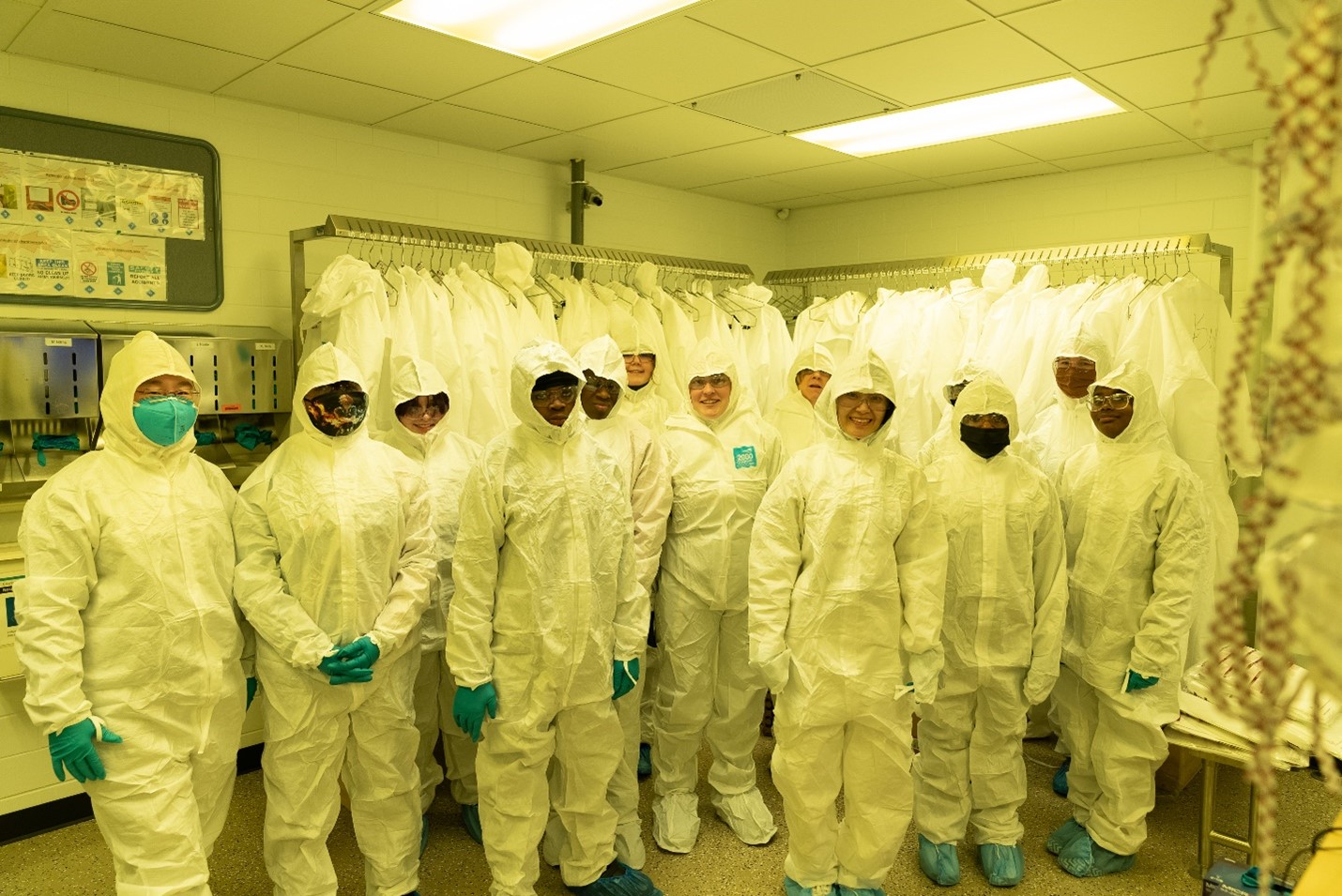
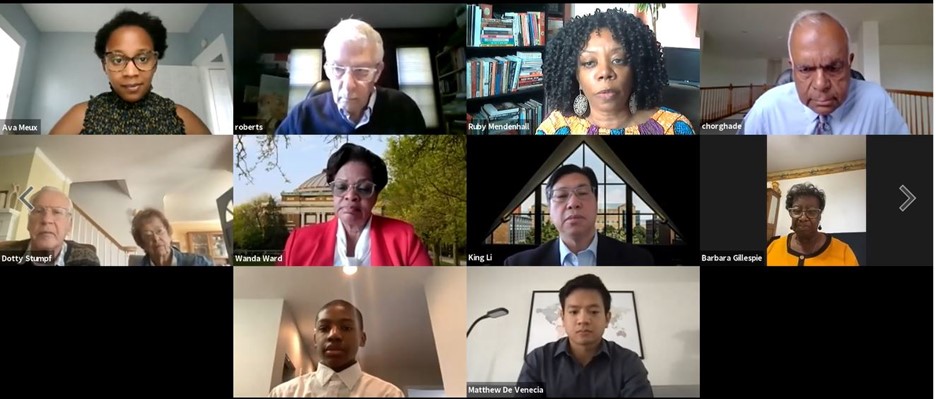
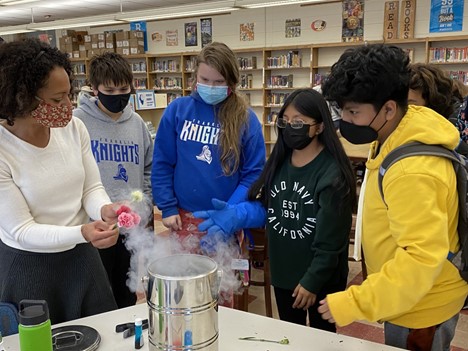


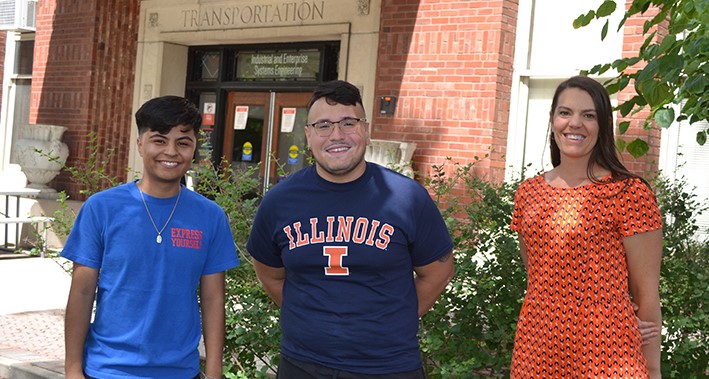



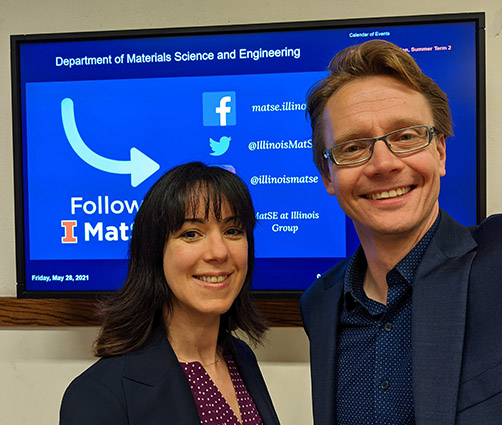

.jpg)






